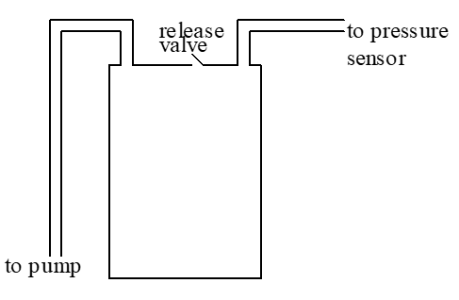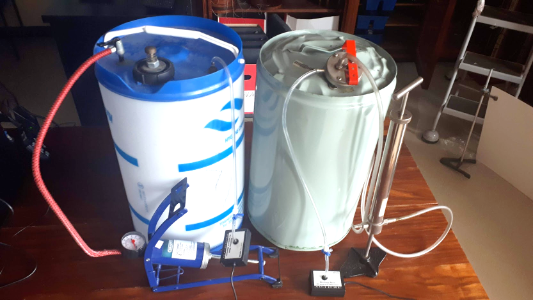- Home
- Semester and Timetable Information
- Study Physics
- Our Research
- Our People
- Careers and Alumni
- Seminars, News and Events
- Outreach and School Resources
- About the School
- What is Physics
- The Crawford Observatory
- Frequently Asked Questions
- UCC Futures Quantum & Photonics
- Supports
Specific Heat Capacity of Air
If a gas is expanded rapidly so that very little heat energy can be exchanged with the surroundings during the expansion process, the process is essentially adiabatic. For an ideal gas, adiabatic expansion obeys the relationship
where
is the ratio of the specific heat capacity at constant pressure to the specific heat capacity at constant volume. The purpose of this experiment is to determine the value of g for air at room temperature.
 |
 |
The experimental arrangement is shown above. The pressure of the air in the container can be monitored by a pressure sensor which is connected to a computer. Initially, the air in the container can be raised to a pressure in excess of atmospheric pressure by means of a simple air-pump. After pumping, some time should be allowed for the air in the container to return to room temperature. A pressure—time plot can then be initiated (by clicking on Expt 12) and, once the plotting has started, the release valve can be pressed for a short time. This causes air to escape rapidly from the container and the pressure inside the container drops to near atmospheric pressure with a corresponding drop in temperature due to the adiabatic expansion. Once the valve is closed again, heat energy flows slowly into the container from the surroundings with a consequential increase in both the pressure and temperature of the air.


